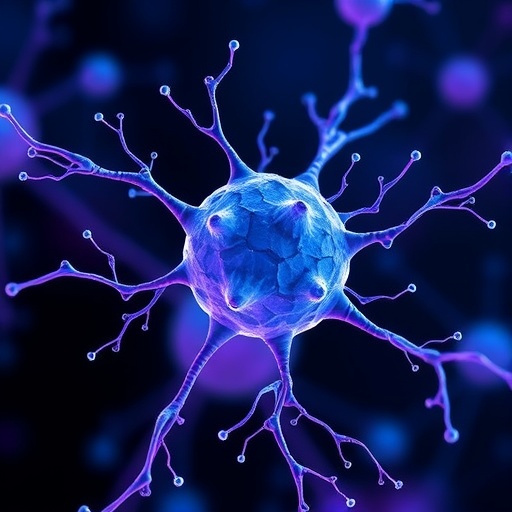For decades, the primary cilium—a tiny, antenna-like projection extending from the surface of nearly all human cells—was overlooked in scientific literature and textbooks. Though minuscule and unassuming in appearance, this slender cellular appendage has captured the intense interest of developmental biologists due to its pivotal role in embryogenesis and its association with a group of diseases known as ciliopathies. Affecting roughly one in every 2,000 individuals worldwide, these disorders highlight the critical importance of understanding how primary cilia function and form.
The primary cilium is not merely a structural feature of cells; it acts as a sophisticated signaling hub, integral to processing developmental cues. Back in 2003, Kathryn Anderson, PhD, then a scientist at Memorial Sloan Kettering Cancer Center (MSK), revealed that these organelles are essential for interpreting Hedgehog protein signals—key regulators directing early embryonic patterning, including the formation of the neural tube. This discovery catalyzed a wave of research aimed at deciphering the molecular underpinnings governing primary cilium formation, a pathway shrouded in mystery until now.
Despite advances, one fundamental question remained elusive: which molecular factors command a cell to initiate building a primary cilium? Addressing this, a recent groundbreaking study led by MSK developmental biologists Yinwen Liang, PhD, and Alexandra Joyner, PhD, now illuminates a major piece of this biological puzzle. Published in Science, their work identifies two transcription factors, SP5 and SP8, as master regulators—effectively acting as molecular switches that trigger the construction of primary cilia during mammalian embryonic development.
Transcription factors are proteins that control gene expression by binding to DNA and orchestrating the activation or repression of specific genes. In the context of cilium formation, Drs. Liang and Joyner hypothesized that these regulatory proteins might determine which cells produce primary cilia. To dissect this hypothesis, the team leveraged high-resolution molecular techniques including single-cell RNA sequencing (scRNAseq) and Assay for Transposase-Accessible Chromatin with sequencing (ATAC-seq).
By comparing mouse embryonic cells that naturally possess primary cilia with cells from the extraembryonic yolk sac—which notably lack these structures—the researchers generated a comprehensive map of gene expression patterns linked to ciliogenesis. Their scRNAseq analysis revealed over 100 genes more actively transcribed in ciliated cells. Delving deeper with ATAC-seq, they pinpointed genomic regions accessible for transcription factor binding, narrowing in on the SP5 and SP8 genes as prime candidates.
The functional significance of SP5 and SP8 was rigorously tested by manipulating their expression in embryonic cells. Knocking out these genes in ciliated cells disrupted cilium formation, confirming their necessity, while overexpressing SP8 in non-ciliated cells induced the development of primary cilia de novo. These compelling results underscore the concept that SP5 and SP8 sit at the apex of the genetic hierarchy controlling ciliogenesis, effectively ‘switching on’ the entire assembly program for these cellular organelles.
This revelation not only expands fundamental knowledge of cell biology but also carries significant biomedical implications. Ciliopathies encompass a broad spectrum of clinical conditions, from sensory deficits like hearing loss to anatomical anomalies such as situs inversus, where an individual’s internal organs are mirrored from their normal positions. Understanding how cilia formation is genetically controlled opens avenues for the potential development of targeted therapies or regenerative strategies aimed at correcting ciliopathy-related defects.
The study also highlights the dynamic regulation of transcription factors in early development. SP5 and SP8 modulate an intricate network of downstream genes necessary for synthesizing and assembling the complex protein structures that constitute cilia. This finding challenges previous models that posited cilia absence might result primarily from post-translational disassembly rather than transcriptional control, shifting the research paradigm towards genetic initiation.
Looking forward, Dr. Liang plans to harness these foundational insights in her upcoming independent research program, aiming to translate molecular discoveries into clinical advances. Dr. Joyner, newly emeritus at MSK, reflects on decades of scientific inquiry that have progressively uncovered the indispensable role of primary cilia, expressing optimism about future breakthroughs.
Beyond developmental biology, the principles uncovered could have ramifications in oncology, tissue regeneration, and neurobiology, where cilia-mediated signaling influences cellular behavior and organismal homeostasis. This study exemplifies how state-of-the-art genomic and epigenomic techniques can be synergistically applied to unravel complex cellular processes, setting a new standard for research into organelle biogenesis.
In sum, the identification of SP5 and SP8 as critical transcriptional drivers of primary cilium formation constitutes a landmark achievement, resolving a longstanding enigma in cell biology. This discovery not only broadens our scientific comprehension but also ignites hope for therapeutic innovations benefiting millions affected by ciliopathies worldwide.
Subject of Research: Transcriptional regulation of primary cilium formation in mammalian embryogenesis
Article Title: Transcription factors SP5 and SP8 drive primary cilia formation in mammalian embryos
News Publication Date: 28-Aug-2025
Web References:
- DOI: 10.1126/science.adt5663
- Memorial Sloan Kettering Cancer Center: https://www.mskcc.org/profile/kathryn-anderson
- Hedgehog gene: https://medlineplus.gov/genetics/gene/shh/
Image Credits: Image of primary cilia by Memorial Sloan Kettering Cancer Center, available at EurekAlert
Keywords: Primary cilia, ciliopathies, developmental biology, transcription factors, SP5, SP8, embryonic development, single-cell RNA sequencing, ATAC-seq, gene regulation, Hedgehog signaling, mammalian embryos, organelle biogenesis




